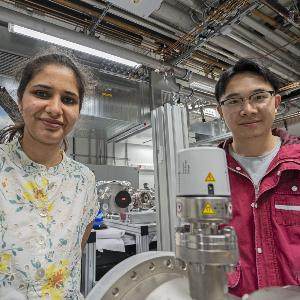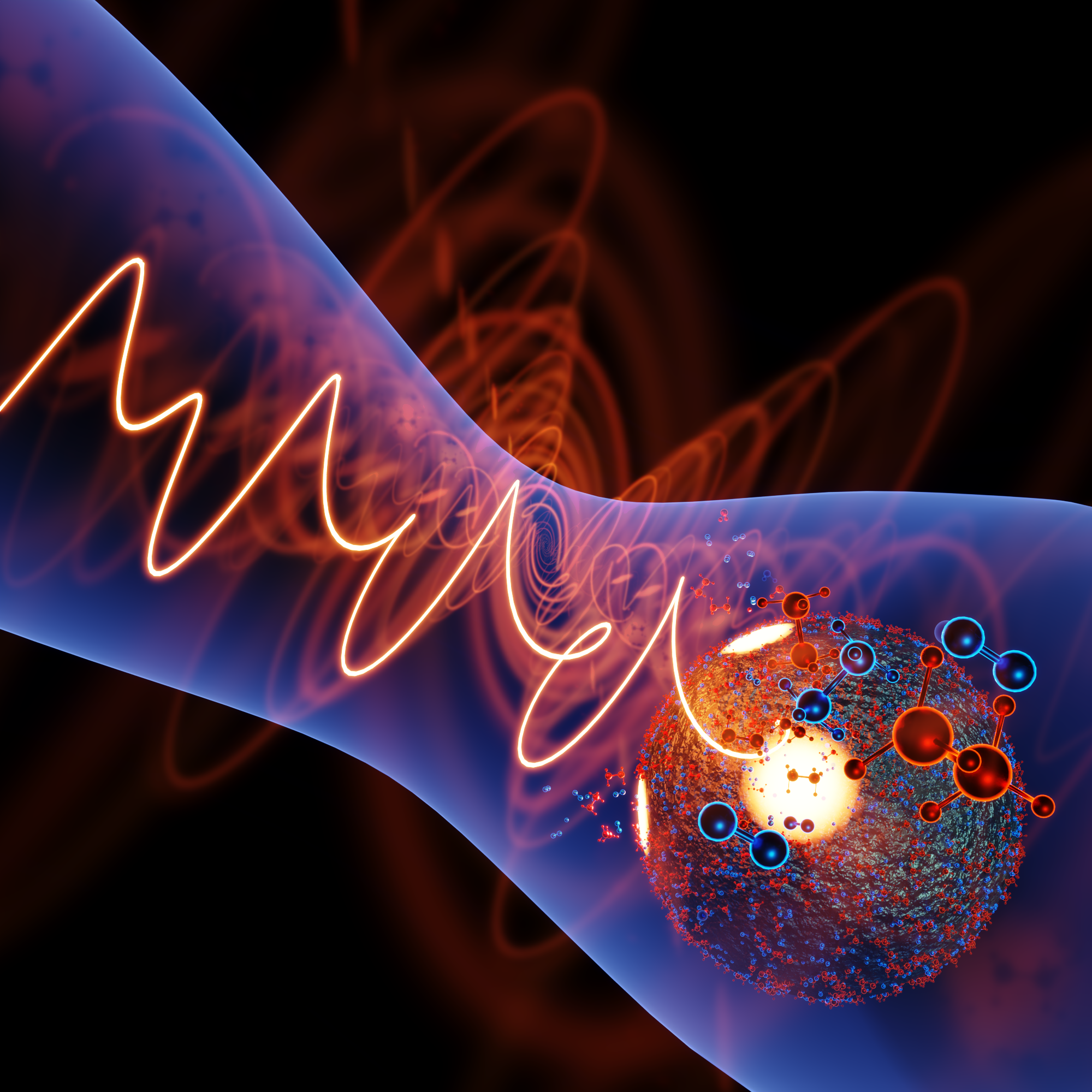Light-Controlled Reactions at the Nanoscale
24 May 2022
Physicists at LMU and the Max Planck Institute of Quantum Optics have used for the first time laser light to control the location of light-induced reactions on the surface of nanoparticles.
24 May 2022
Physicists at LMU and the Max Planck Institute of Quantum Optics have used for the first time laser light to control the location of light-induced reactions on the surface of nanoparticles.

First authors Ritika Dagar and Wenbin Zhang in the lab in Garching. | © Thorsten Naeser
There is hustle and bustle on the surface of nanoparticles. Molecules dock, dissolve and change their location. All this drives chemical reactions, changes matter and even gives rise to new materials.
The events in the nanocosmos can be controlled with the help of strong electromagnetic fields. This has now been demonstrated by a team led by Dr. Boris Bergues and Prof. Matthias Kling from the Ultrafast Electronics and Nanophotonics Group at LMU. To this end, the researchers used strong, femtosecond-laser pulses to generate localized fields on the surfaces of isolated nanoparticles. A femtosecond is one millionth of a billionth of a second.

A nanoparticle in the field of a femtosecond laser pulse with tailored waveform and polarization. Illustration: RMT.Bergues
Using so-called reaction nanoscopy, a new technique recently developed in the same group, the physicists were able to image the reaction site and birthplace of molecular fragments on the surface of silica nanoparticles – at a resolution better than 20 nanometers.
The nanoscopic spatial control, achievable at even higher resolution, was brought about by the scientists by superimposing the fields of two laser pulses with different color, and controlled waveform and polarization. Thereby, they had to set the time delay between the two pulses with attosecond accuracy. An attosecond is still a thousand times shorter than a femtosecond. When interacting with this tailored light, the surface of the nanoparticles and the molecules adsorbed there were ionized at targeted sites, leading to the dissociation of the molecules into different fragments.
Molecular surface reactions on nanoparticles play a fundamental role in nanocatalysis. They could be a key to clean energy production, in particular via photocatalytic water splitting.Prof. Matthias Kling
"Molecular surface reactions on nanoparticles play a fundamental role in nanocatalysis. They could be a key to clean energy production, in particular via photocatalytic water splitting," explains Matthias Kling. The results also pave the way for tracking photocatalytic reactions on nanoparticles not only with nanometer spatial resolution, but also with femtosecond temporal resolution. “This will provide detailed insights into the surface processes on the natural spatial and temporal scales of their dynamics," adds Boris Bergues. The scientists anticipate that this promising new approach can be applied to numerous complex isolated nanostructured materials.
Wenbin Zhang, Ritika Dagar, Philipp Rosenberger, Ana Sousa, Marcel Neuhaus, Weiwei Lii, Shrjeel A. Khan, Ali Alnaser, Emiliano Cortes, Stefan Maier, Cesar Costa-Vera, Matthias F. Kling, Boris Bergues. All-optical nanoscopic spatial control of molecular reaction yields on nanoparticles. Optica, 2022.